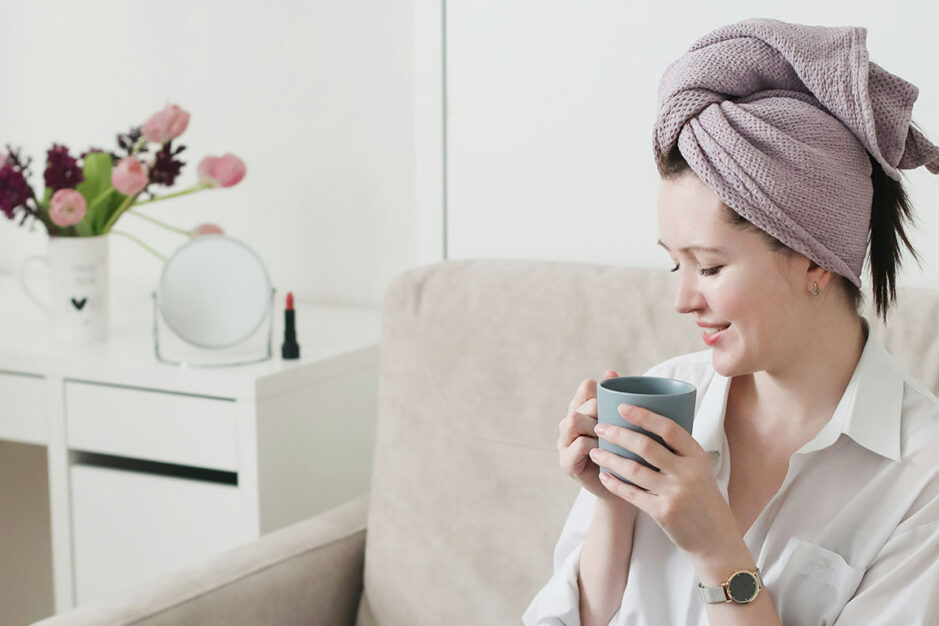Setting up a meditation space at home can help you find inner peace and stick to your practice. Here are the best products to create a zen environment that’ll make you want to meditate every day.
Enhanced Focus
A dedicated space helps minimize distractions and improve concentration during meditation.
Improved Relaxation
A calming environment promotes deeper relaxation and stress reduction.
Consistent Practice
Having a designated area encourages regular meditation sessions.
Personal Sanctuary
Creates a private retreat for mental and emotional well-being.
1. Choose the Perfect Spot
Finding the right location is key to creating a meditation space that you’ll actually use. Look for a quiet corner in your home where you won’t be disturbed. It doesn’t have to be big – even a small nook can work great. The important thing is that it feels peaceful to you.
If you’re tight on space, get creative! You could set up a folding screen in your bedroom or living room to create a little meditation area. Or, transform a closet into a cozy meditation nook. The goal is to have a dedicated spot that puts you in a calm mindset as soon as you see it.
Consider factors like natural light, airflow, and temperature when selecting your meditation spot. A space near a window can provide both natural light and a connection to the outdoors, which can enhance your practice. However, if outside noise is an issue, you might prefer a more secluded area. The key is to choose a location that feels right for you and supports your meditation goals.

2. Get Comfy with the Right Seating
Comfort is super important when you’re meditating. You want to be able to sit still without getting distracted by aches and pains. A good meditation cushion or bench can make a big difference. Look for something that supports good posture and feels comfy to sit on for a while.
Meditation cushions, also called zafus, are great for floor sitting. They lift your hips a bit to help you keep your back straight. If sitting on the floor isn’t your thing, try a meditation bench. These let you kneel comfortably with your weight supported. And don’t forget a soft mat to protect your knees and ankles!
When choosing seating, consider your personal preferences and any physical limitations you might have. Some people prefer a firm cushion for better support, while others like a softer, more plush surface. You might even want to have a few options available so you can switch things up depending on your mood or the length of your meditation session. Remember, the goal is to be comfortable enough that you can focus on your practice without being distracted by physical discomfort.

3. Set the Mood with Lighting
The right lighting can really help you relax and focus during meditation. Soft, warm light is usually best. Harsh overhead lights can be distracting and make it hard to chill out. Instead, try using lamps with dimmer switches so you can adjust the brightness.
Salt lamps are popular in meditation spaces. They give off a soft, orange glow that’s super calming. Plus, some people believe they have health benefits. If you’re worried about fire safety, LED candles are a great alternative to real ones. They flicker just like the real thing but without any risk.
Consider incorporating natural light into your meditation space as well. If possible, position your area near a window where you can enjoy soft daylight during your practice. You might want to use sheer curtains to filter the light and create a gentle, diffused glow. For evening meditations, string lights or a small table lamp can provide a cozy, intimate atmosphere. Remember, the goal is to create a lighting environment that helps you feel calm, focused, and connected to your practice.
4. Bring Nature Indoors
Adding some natural elements to your meditation space can make it feel more peaceful and alive. Plants are an easy way to do this. They clean the air and look pretty too. Choose low-maintenance plants like succulents or peace lilies if you don’t have a green thumb.
A small water fountain can add a soothing sound to your space. The gentle trickle of water is super relaxing and can help drown out any outside noise. If you don’t want the hassle of real water, you can find electric fountains that look and sound just like the real thing.
Consider incorporating other natural elements as well. A small bowl of smooth river stones can serve as a tactile focus during meditation. You might also include natural wood elements, like a driftwood sculpture or a bamboo mat. These natural materials can help ground your practice and create a sense of connection to the earth. Even something as simple as opening a window to let in fresh air can enhance the natural feel of your meditation space.

5. Tools to Guide Your Practice
Having some meditation tools can help you stay focused and make your practice more enjoyable. A timer is really handy so you don’t have to keep checking the clock. There are lots of great meditation apps that have timers, guided meditations, and progress tracking. Check out our guide to the best meditation apps for beginners to find one that works for you.
Singing bowls and chimes are traditional meditation tools that make beautiful sounds. You can use them to signal the start and end of your meditation, or as a focus point during your practice. Mala beads are another classic tool. You can use them to count breaths or repetitions of a mantra.
Consider adding a meditation journal to your toolkit. Writing down your experiences, insights, and challenges can deepen your practice and help you track your progress over time. You might also want to include inspirational books or cards with meaningful quotes to reflect on before or after your meditation. Remember, the tools you choose should support and enhance your practice, not complicate it. Start with a few basics and add more as you develop your meditation routine.
6. Soothing Scents for Relaxation
Smell is a powerful sense that can really affect your mood. Adding some calming scents to your meditation space can help you relax and focus. An essential oil diffuser is a great way to do this. You can change up the scents depending on how you’re feeling. Lavender is great for relaxation, while peppermint can help you feel more alert.
If you prefer incense, look for natural, low-smoke varieties. Sandalwood and sage are popular choices for meditation. Just be sure to use incense safely and open a window for ventilation. Scented candles are another option, but be careful with open flames if you tend to get sleepy during meditation!
Consider creating a signature scent for your meditation space. This could be a blend of essential oils or a specific incense that you use only during your practice. Over time, this scent will become associated with your meditation routine, helping you quickly shift into a meditative state. Remember to use scents sparingly – you want them to enhance your practice, not overpower it. If you’re sensitive to smells, you might prefer to keep your space scent-free and focus on other sensory elements instead.

7. Create a Peaceful Soundscape
The right sounds (or lack of them) can make a big difference in your meditation practice. If you live in a noisy area, a white noise machine can help block out distracting sounds. These devices create a constant, soothing background noise that makes it easier to focus.
If you prefer some gentle background sounds, there are lots of options. You can find devices that play nature sounds like rain or ocean waves. Or, use a music player with meditation-specific tracks. Just be sure to choose something that won’t distract you from your practice.
Consider experimenting with different types of sound for your meditation. Some people find binaural beats or ambient music helpful for getting into a meditative state. Others prefer the simplicity of a single bell or gong sound to mark the beginning and end of their session. You might even want to try guided meditations, which combine soothing background sounds with spoken instructions. Remember, the best soundscape is one that helps you feel calm and focused without becoming a distraction itself.

8. Visual Aids for Focus
Some people find it helpful to have something to look at during meditation. Mandala tapestries or posters can be a great focal point. These intricate designs can help quiet your mind as you gaze at them. You can also create a small Zen garden on your desk or table. Raking the sand can be a meditative practice in itself.
Inspirational artwork or quotes can also be nice additions to your meditation space. Choose images or words that resonate with you and make you feel calm and centered. Just be careful not to clutter your space with too many visual elements – remember, simplicity is key in creating a zen environment.
Consider creating a simple altar or focal point in your meditation space. This could be a small table or shelf where you place meaningful objects, like a special stone, a photograph, or a small statue. These items can serve as visual reminders of your intentions for your practice. Some people also find it helpful to have a specific spot to rest their gaze during meditation, like a candle flame or a simple geometric shape. Whatever visual aids you choose, make sure they support your practice rather than distract from it.

9. Cozy Comfort Essentials
Being comfortable is super important when you’re trying to meditate. A soft blanket or shawl can keep you warm and cozy, especially if you tend to get chilly when sitting still. Look for natural materials like cotton or wool that feel nice against your skin.
An eye pillow can be really helpful if you find it hard to keep your eyes closed during meditation. These little pillows are filled with things like flax seeds and lavender. They gently cover your eyes, blocking out light and helping you relax. Supportive bolsters and pillows can also help you maintain a comfortable position, especially during longer meditation sessions.
Consider having a variety of comfort items available to suit different needs. A lightweight throw for warmer days, a heavier blanket for colder times. You might want to include a small fan for air circulation or a heating pad for soothing warmth. Remember, physical comfort supports mental relaxation, so it’s worth investing in items that help you feel at ease. Just be careful not to make your space so cozy that you fall asleep during meditation!

10. Create a Tech-Free Zone
One of the best things about a meditation space is that it can be a break from technology. Having a special box or basket to store your phone and other gadgets can help you resist the urge to check them. This way, you can fully unplug and focus on your practice.
An old-school analog clock can be helpful if you need to keep track of time. The quiet ticking can even be a nice focus point for your meditation. And don’t forget a journal and pen for jotting down thoughts after your practice. Writing can be a great way to reflect on your meditation experiences and track your progress over time.
Consider establishing a ritual for entering your tech-free meditation zone. This could be as simple as turning off your phone and placing it in a designated spot, or it might involve changing into comfortable clothes and taking a few deep breaths before beginning your practice. Creating clear boundaries between your connected life and your meditation time can help you more fully engage with your practice. If you use meditation apps or guided audio, consider downloading what you need in advance so you can keep your devices in airplane mode during your session.

Wrapping Up: Your Perfect Zen Space
Creating a meditation space doesn’t have to be complicated or expensive. The most important thing is that it feels good to you. Start with the basics – a comfortable seat and some soft lighting – and build from there. Add elements that help you feel calm and focused, whether that’s plants, soothing sounds, or inspiring artwork.
Remember, your meditation space is personal. What works for someone else might not work for you, and that’s okay. Feel free to experiment and change things up until you find what helps you meditate best. The goal is to create a space that makes you want to sit down and practice regularly. With the right setup, you’ll be on your way to a more peaceful mind in no time!
As you develop your meditation practice, you may find that your needs and preferences for your space change. That’s perfectly normal. Don’t be afraid to adjust your environment as you grow. The most important thing is that your space continues to support and inspire your practice. Whether you have a whole room dedicated to meditation or just a small corner, what matters most is the intention and presence you bring to your practice each time you enter your zen space.





